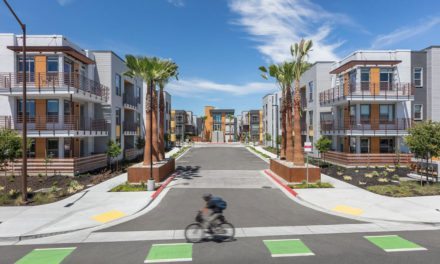Project is the first in New England to win the Association for Learning Environments’ highest honor for excellence in educational facility design
HARTFORD, Conn., Feb. 1, 2017 /PRNewswire/ — JCJ Architecture was recently recognized with the 2016 James D. MacConnell Award for its design of the Fairchild Wheeler Inter-District Magnet Campus. Presented by the Association for Learning Environments (A4LE), this prestigious award recognizes a comprehensive planning process and responsive educational design that serves the needs of students, educators, and communities. The project is the first in New England to be accorded this honor.
Rob Pillar, AIA, ALEP, A4LE’s Northeast Regional Chair commented, “All of this year’s entries were exceptional, but the Fairchild Wheeler Inter-District Magnet campus stands out because of the team’s ability to overcome seemingly insurmountable obstacles and design a school building that inspires its community to unite toward a common goal.”
Located in Bridgeport, Connecticut – one of the most urbanized and economically challenged cities in the nation – Fairchild Wheeler tasked JCJ Architecture with designing a campus that would respond to a rigorous STEM (Science, Technology, Engineering and Mathematics) curriculum and create an environment that would reduce racial and economic isolation of students. The 10-year planning and design process culminated in an educational facility that forms a dynamic community of learners comprised of Bridgeport’s urban students and suburban students from 8 surrounding school districts.
Fairchild Wheeler’s interactive STEM curriculum brings together three distinct programs – Information Technology and Software Engineering, Biotechnology Research and Zoological Sciences, and Aerospace/Hydrospace Engineering and Physical Sciences. The school’s campus setting, science-focused curriculum and sustainability objectives served as inspiration for several design elements: green roofs are available for outdoor learning, photo-voltaic units and wind turbines generate energy, and constructed wetlands aid in water recovery. The site, preserved of woodlands, indigenous plants and wetlands, provides the school’s 1,500 students – many of whom have spent their lives in an urban setting – with hands-on indoor and outdoor learning opportunities. On the interior, flexible project labs and technology-rich community spaces allow teachers and area partners, such as the Beardsley Zoo and Sacred Heart University, to collaborate with students and create hands on learning experiences.
Attributed in part to JCJ’s forward-thinking design for the school, Fairchild Wheeler recently graduated 98.5 percent of seniors in its first class of students, far surpassing traditional graduation rates for urban districts in general and Bridgeport in particular.
“Every aspect of this school was designed to empower students to take responsibility for their own learning and promote interdisciplinary connections,” said Jim LaPosta, FAIA, Principal-in-Charge at JCJ Architecture. “Seeing students, teachers, administrators and industry partners utilizing the school to create life-changing experiences has been incredibly gratifying. This is why we do what we do.”
About JCJ Architecture
Founded in 1936, JCJ is headquartered in Hartford with offices in Atlanta, Boston, Los Angeles, New York City, Phoenix and San Diego. The firm is recognized nationally as one of the country’s most respected architecture firms, providing clients with comprehensive planning, programming, architectural and interior design services. With a long-standing reputation for creativity, project delivery excellence and a strong business acumen, JCJ Architecture works across a broad range of building types including K-12, civic, higher education, sports and recreation, hospitality and entertainment. For more information, visit www.jcj.com.
The Association for Learning Environments (A4LE) is the only professional organization whose primary purpose is improving the places where children learn. With approximately 4,400 members, A4LE encompasses six geographic regions across the United States, and supports regional representation in Canada, Australasia, and the UK. A4LE embraces a collaborative network of professionals with one single goal – building healthy, safe, resilient and sustainable 21st Century learning places that inspire transformation in education, enhance student and teacher performance, and support culture and community vitality. To learn more, visit www.a4le.org or follow on Twitter @A4LE2.



